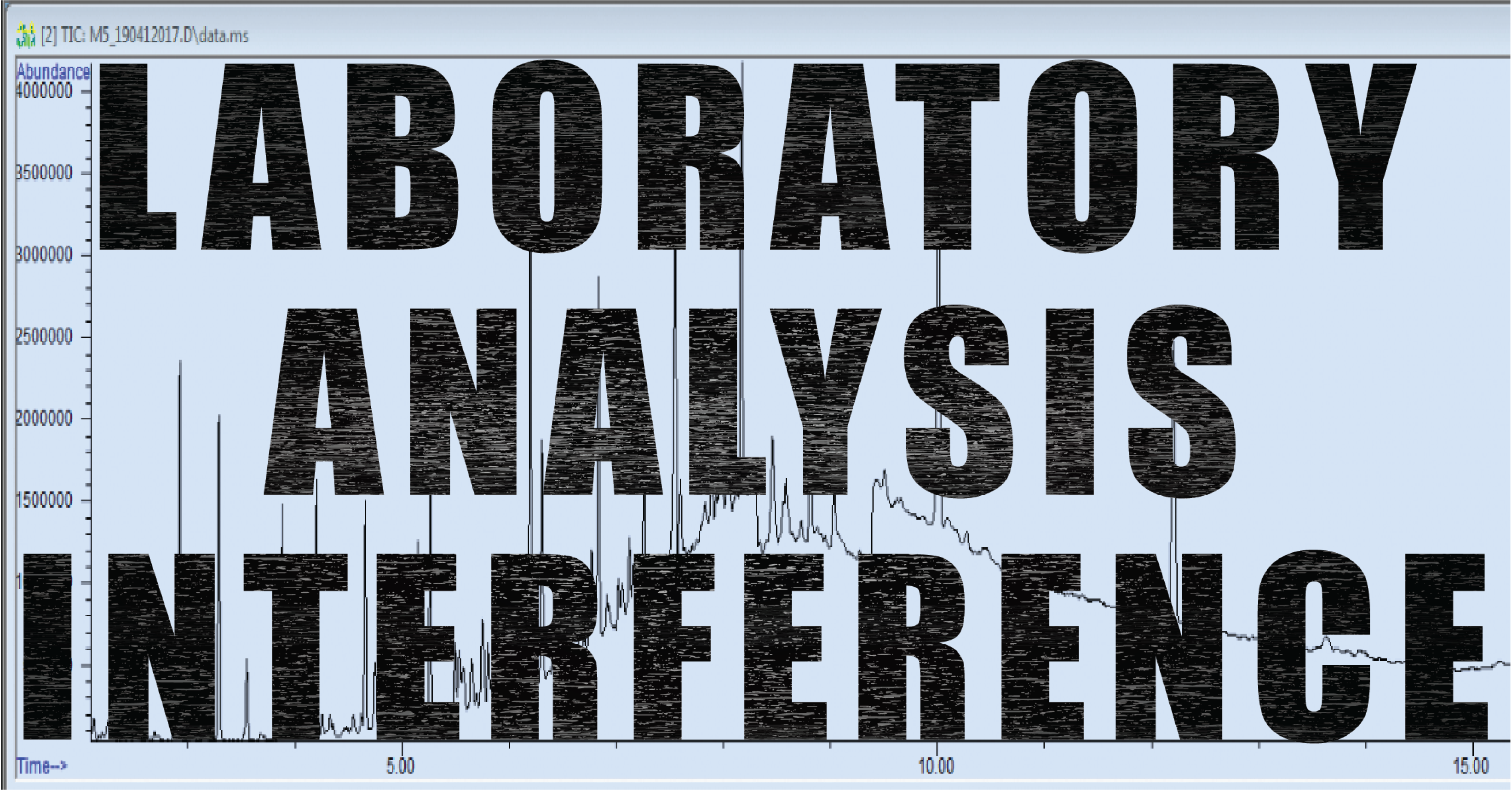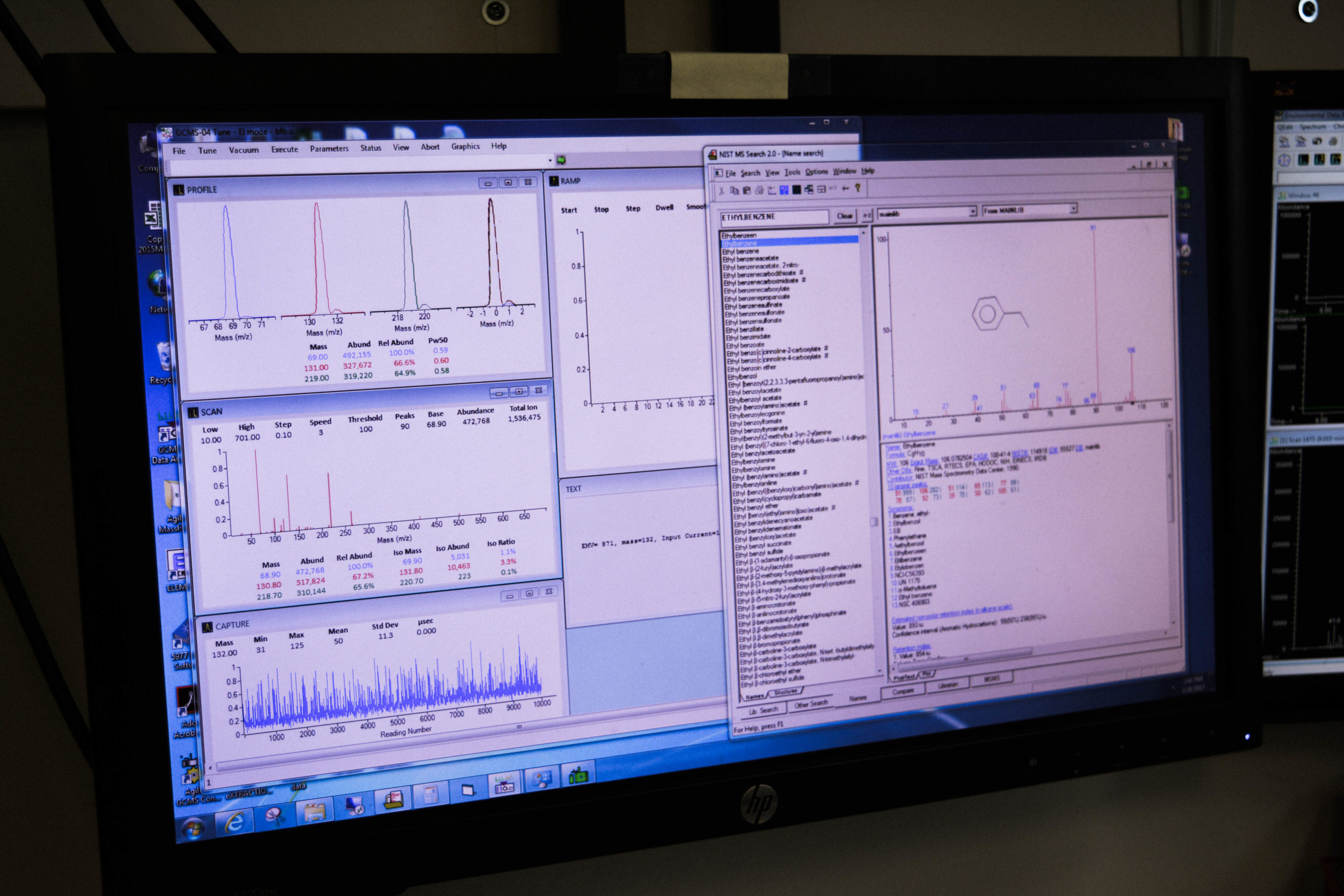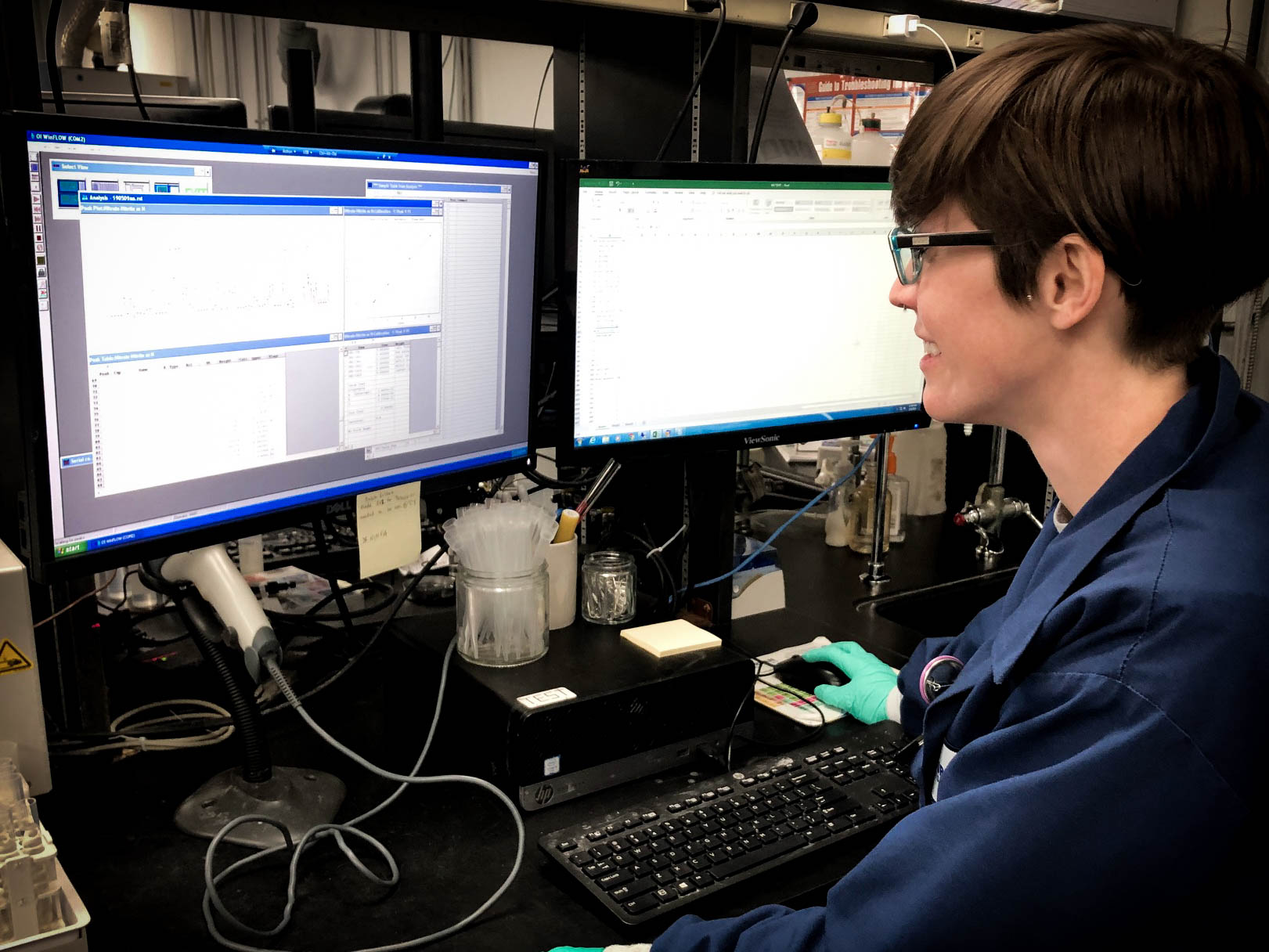Laboratory Analysis Interference – Part 3

In this final installment of our three-part series, we will describe some common interferences our laboratory analysts encounter that may explain why some of your data has, for example, higher reporting limits or qualifiers.
Laboratory Analysis Interference, also referred to as matrix interference, occurs when non-target analytes or physical/chemical characteristics of a sample prevent quantification of the analytes of interest. This can cause increased uncertainty in the result reported to the client. Sometimes, additional preparation and/or analysis is unavoidable to mitigate the effects of the interference and obtain usable data. Ultimately, analysis interference can have a dramatic impact on your data and may be difficult to clarify, resolve and understand.
Part 3. Chromatographic Overlap
How it Happens

A normal chromatogram will have clearly defined peaks and valleys indicating the concentration of a particular analyte in a sample. However, sometimes we will see unusually shaped peaks or overlapping peaks which indicate matrix interference. This may mean one or more analytes are present at very high levels.
How to Overcome and Data Impact
To overcome this challenge and get more reliable data, we can attempt to run the sample via a different method (if available) or dilute the sample. Sometimes multiple analyses at multiple dilutions may be required. This can extend turnaround times and may result in additional analytical costs. As with the case of VOCs and foaming, dilutions will result in elevated reporting limits. For example, a normal Nitrate reporting limit may be 0.2 mg/L, but with a 25-time dilution, the reporting limit would be 5.0 mg/L.

Avoid costly resampling due to lack of lab communication or partnership oversights. Choose our team of highly dedicated professionals for your next project. Contact our team for more information.
